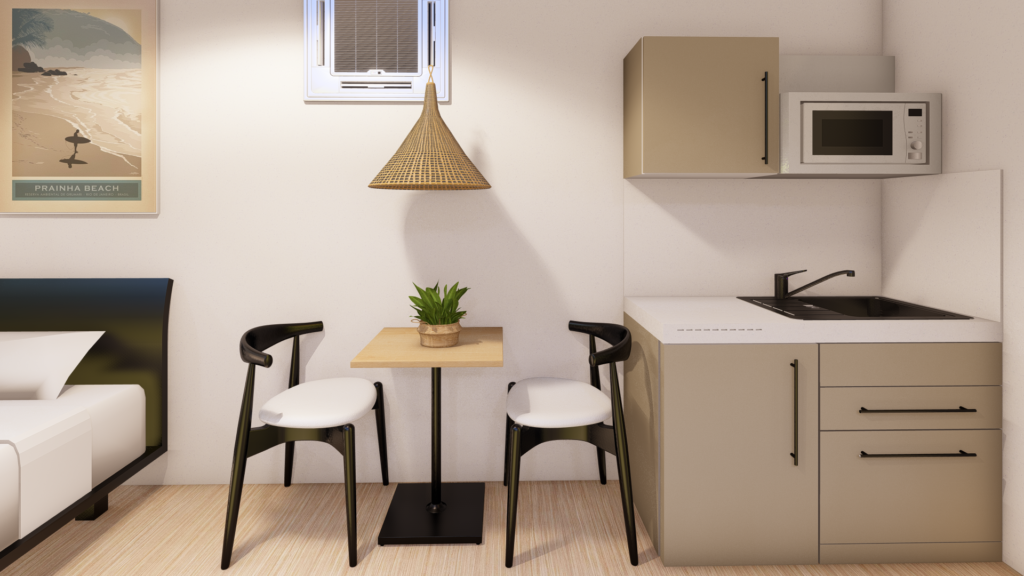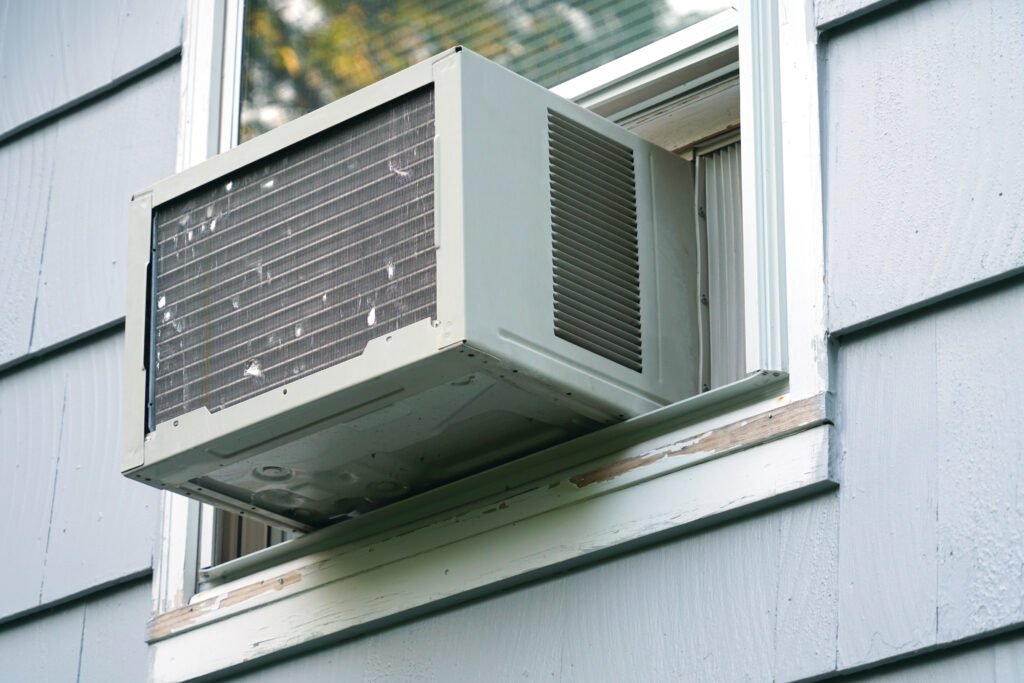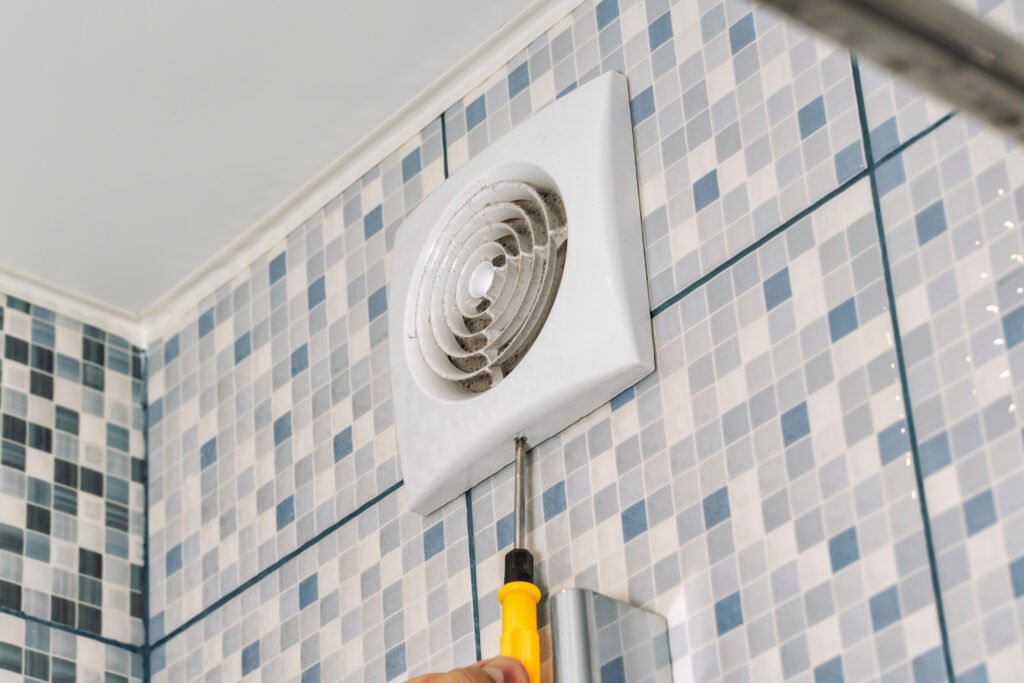
Building a home out of a shipping container is not only an innovative solution for sustainable and compact living but also an architectural trend that’s rapidly gaining traction. However, ensuring that your shipping container home remains comfortable year-round necessitates careful consideration of HVAC equipment and ventilation.

This article sheds light on the critical equipment to keep in mind when planning your container home. Before we dive into the few options, here’s a basic BTU (British Thermal Units) table based on square footage for heating and cooling purposes. This table provides general estimates and may vary based on factors such as insulation, number of windows, ceiling height, and climatic conditions. Always consult with a HVAC professional or engineer for precise requirements.
BTU Requirement Table (per sq. ft.)
| Square Footage | Estimated BTU for Cooling | Estimated BTU for Heating |
|---|---|---|
| Up to 150 sq. ft. | 5,000 BTU | 10,000 BTU |
| 150 – 250 sq. ft. | 6,000 BTU | 12,000 BTU |
| 250 – 300 sq. ft. | 7,000 BTU | 14,000 BTU |
| 300 – 350 sq. ft. | 8,000 BTU | 16,000 BTU |
| 350 – 400 sq. ft. | 9,000 BTU | 18,000 BTU |
| 400 – 450 sq. ft. | 10,000 BTU | 20,000 BTU |
| 450 – 550 sq. ft. | 12,000 BTU | 24,000 BTU |
| 550 – 700 sq. ft. | 14,000 BTU | 28,000 BTU |
| 700 – 1,000 sq. ft. | 18,000 BTU | 36,000 BTU |
| 1,000 – 1,200 sq. ft. | 21,000 BTU | 42,000 BTU |
| 1,200 – 1,400 sq. ft. | 23,000 BTU | 46,000 BTU |
| 1,400 – 1,500 sq. ft. | 24,000 BTU | 48,000 BTU |
| 1,500 sq. ft. & above | 24,000+ BTU (adjust based on specific requirements) | 48,000+ BTU (adjust based on specific requirements) |
Please remember that the values provided above are rough estimates. For an accurate calculation tailored to a specific project, considering factors such as the number of occupants, window areas, insulation quality, and more is crucial.

1. Mini-Split Units: The Go-To Choice Why They’re Popular: Mini-split units, also known as ductless systems, are increasingly becoming the top HVAC choice for container homes. Compact, efficient, and easy to install, these units provide both heating and cooling while allowing for independent temperature control in different zones or areas of the home. This adaptability makes them especially suitable for the confined space of a container home.

Explore mini-split units for the best performance and energy efficiency by following this link.
2. Window Units: A Viable Option for Some While mini-split units are the popular choice, window units remain a viable option for those on a tighter budget or for temporary arrangements. They’re easier to install and can be removed or replaced without much hassle. However, it’s essential to ensure that the container’s structural integrity is maintained when creating openings for these units.

3. Exhaust Vents: Essential for Bathrooms Proper ventilation is critical, especially in confined spaces like container homes. In bathrooms, exhaust vents are indispensable. These vents remove humid air, prevent mold growth, and ensure that the bathroom remains dry and odor-free. Wall-mounted exhaust vents are often preferred in container homes to prevent roof penetrations, ensuring better water-tightness.

Explore top-rated exhaust vents for optimal bathroom ventilation.
4. Avoiding Roof Penetrations Shipping container roofs, while robust, are best left undisturbed as much as possible to preserve their integrity and waterproof nature. Wall-mounted solutions, be it for HVAC systems or exhaust vents, are preferred to maintain the container’s structural and protective properties.
 sale
sale PaperBox Container-Inspired Tissue Holder
Original price was: $69.99.$49.99Current price is: $49.99.
 sale
sale CargoBloom Container-Inspired Decorative Planter
Original price was: $69.99.$49.99Current price is: $49.99.
 sale
sale Plans for 20ft Shipping Container Bar: Perfect for Breakfast, Sushi, Coffee or Wine/Beer
Original price was: $50.00.$35.00Current price is: $35.00.
 sale
sale The Green Home Revolution: Container Living Made Easy eBook
Original price was: $15.99.$4.99Current price is: $4.99.
Proper planning ensures that your shipping container home remains comfortable, efficient, and sustainable. Prioritizing the right HVAC solutions and effective ventilation systems can make a world of difference in your living experience. With these considerations in mind, you’re well on your way to building a cozy, well-ventilated, and energy-efficient container home.

